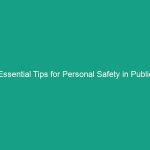Introduction
Good morning team! Today, we’re diving into a crucial topic that affects each one of us in the workplace: What Kind of Influence Are You? This Toolbox Talk aims to shed light on how our actions and attitudes toward health, safety, and Environment (HSE) practices can shape our workplace culture and influence our colleagues. Understanding our influence is not just about compliance; it’s about fostering a safe environment where everyone feels empowered to prioritize Safety.
Understanding What Kind of Influence You Are
The influence you wield in the workplace can either promote a culture of Safety or contribute to a hazardous environment. When we talk about influence, we’re referring to the ability to affect the behaviors, attitudes, and decisions of our coworkers. Your influence can manifest in various ways, such as leading by example, communicating effectively about safety protocols, or encouraging others to speak up about Hazards.
It’s essential to recognize that influence is a two-way street. While you may influence others, you are also being influenced by your peers, supervisors, and the overall safety culture of the organization. Understanding this dynamic helps in creating a proactive safety culture.
Common misconceptions include the belief that only managers or designated safety leaders can influence safety practices. In reality, every employee plays a vital role in shaping safety culture, regardless of their position.
Key Hazards, Risks, and Safety Considerations
Understanding the influence you have in promoting safety requires awareness of the hazards that may arise in our work environment. Here are some specific hazards and risks to consider:
- Miscommunication: Inadequate communication can lead to misunderstandings about safety protocols, increasing the risk of accidents.
- Complacency: When employees become complacent about safety practices, they may overlook critical Safety Measures, leading to potential injuries.
- Lack of Engagement: If team members are disengaged, they may not report hazards or safety concerns, allowing risks to accumulate.
The consequences of ignoring these safety protocols can be severe, including workplace injuries, legal repercussions, and diminished morale. By recognizing these risks, we can work together to mitigate them and foster a safer work environment.
Best Practices, Procedures, & Actionable Advice
To effectively influence safety in the workplace, consider implementing the following Best Practices:
- Lead by Example: Demonstrate safe behaviors consistently. Your commitment to safety will inspire others to follow suit.
- Open Communication: Foster an environment where team members feel comfortable discussing safety concerns. Use regular safety meetings or briefings to encourage dialogue.
- Provide Feedback: Encourage employees to provide feedback on safety practices. Constructive feedback can lead to improvements and reinforce positive behaviors.
Real-life examples can illustrate the importance of these practices. For instance, a construction site that implemented daily safety briefings saw a significant reduction in accidents. Team members shared their experiences, which led to the identification of previously overlooked hazards.
Regulations, Standards, and Compliance
Understanding and adhering to relevant Regulations and Standards is crucial for maintaining safety in the workplace. Some key regulations include:
- OSHA Standards: The Occupational Safety and Health Administration sets forth regulations aimed at ensuring safe working conditions.
- ISO Standards: The International Organization for Standardization provides guidelines for managing health and safety risks effectively.
- Company-Specific Policies: Familiarize yourself with your organization’s safety policies and Procedures to ensure compliance.
Compliance with these regulations is not merely a bureaucratic requirement; it is crucial for protecting the well-being of all employees. Non-compliance can lead to serious consequences, including fines, increased accident rates, and a negative reputation for the company.
Employee Engagement & Discussion
Encouraging engagement among employees is key to fostering a safety-oriented culture. Here are some open-ended questions to stimulate discussion:
- What safety challenges have you encountered related to your role?
- How do you think we can improve our communication about safety practices?
- Can you share an experience where you felt your influence made a difference in safety?
These questions can help us reflect on our individual and collective roles in promoting safety and encourage us to share valuable insights and experiences.
Conclusion & Key Takeaways
In conclusion, understanding what kind of influence you are in the workplace is essential for fostering a safe and supportive environment. By recognizing the impact of our actions and choices, we can collectively work towards enhancing safety practices and reducing risks.
Remember, safety is everyone’s responsibility. By leading by example, communicating effectively, and engaging with one another, we can create a culture where safety is prioritized. Thank you all for your attention and commitment to making our workplace safer!


